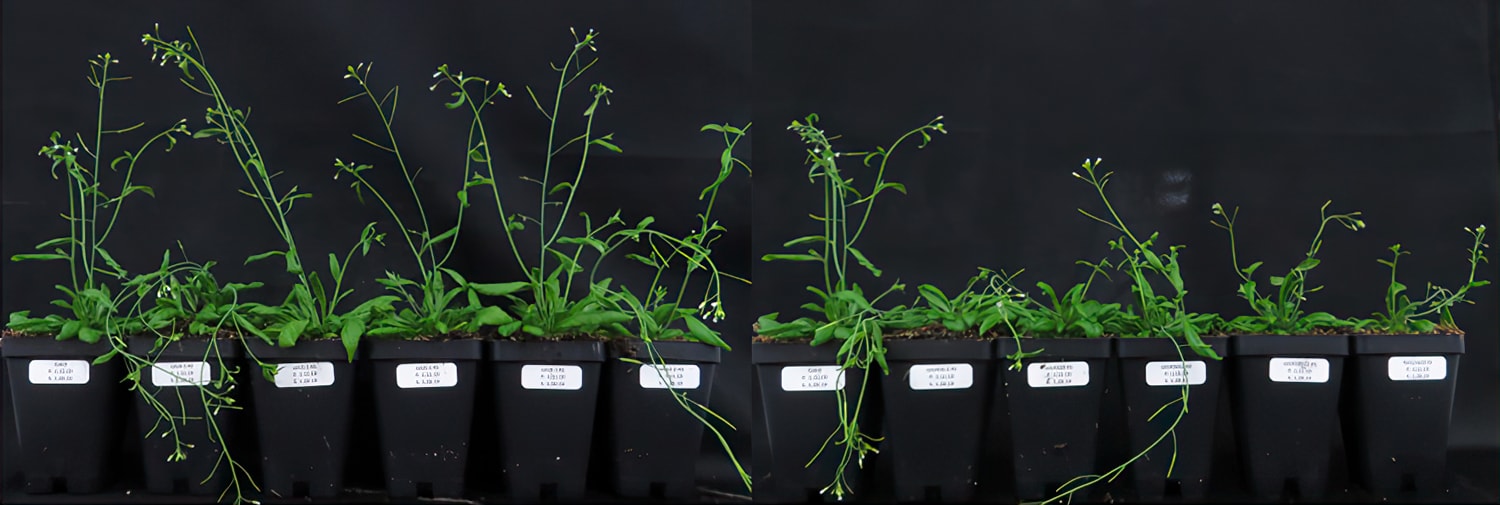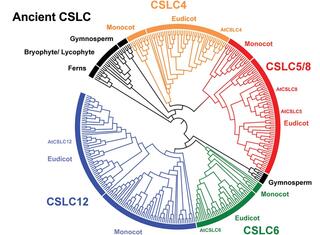
New research from the Great Lakes Bioenergy Research Center shows that a common component of plant cell walls may not be as essential for plant growth and development as previously thought. The findings suggest a new way to increase the content of desired sugars in crops engineered for producing biofuels. The results also raise important questions about plant cell wall structure and reorganization during growth.
Why was this study done?
- Xyloglucan is an abundant polysaccharide in the matrix of plant walls that has been thought to play an important role in cell wall reorganization during plant growth and differentiation.
- Understanding plant cell wall structure is important for experiments aimed at engineering superior crop traits, such as the carbohydrate content of bioenergy feedstocks.

What did the researchers do and find?
- The researchers mutated five key genes in the model plant Arabidopsis to see how the changes would affect xyloglucan synthesis and plant growth.
- Arabidopsis plants with mutations in any one of the five genes had normal levels of xyloglucan. Mutations in multiple genes reduced xyloglucan levels and caused minor changes in some plant tissues.
- Plants with disruptions in all five genes grew and developed quite normally despite having no detectable xyloglucan at all.
What do these findings mean?
- Contrary to expectations, xyloglucan is not necessary for plant growth and development.
- This finding raises the question of whether it may be possible to partially or totally replace xyloglucan or other matrix components of plant cell walls with other, biofuel-relevant carbohydrates without affecting plant yield.
“The synthesis of xyloglucan, an abundant plant cell wall polysaccharide, requires CSLC function.”
Authors: Sang-Jin Kim, Balakumaran Chandrasekar, Anne C. Rea, Linda Danhof, Starla Zemelis-Durfee, Nicholas Thrower, Zachary S. Shepard, Markus Pauly, Federica Brandizzi, and Kenneth Keegstra
Published: July 2020, Proceedings of the National Academy of Sciences
Abstract: Xyloglucan (XyG) is an abundant component of the primary cell walls of most plants. While the structure of XyG has been well studied, much remains to be learned about its biosynthesis. Here we employed reverse genetics to investigate the role of Arabidopsis cellulose synthase like-C (CSLC) proteins in XyG biosynthesis. We found that single mutants containing a T-DNA in each of the five Arabidopsis CSLC genes had normal levels of XyG. However, higher-order cslc mutants had significantly reduced XyG levels, and a mutant with disruptions in all five CSLC genes had no detectable XyG. The higher-order mutants grew with mild tissue-specific phenotypes. Despite the apparent lack of XyG, the cslc quintuple mutant did not display significant alteration of gene expression at the whole-genome level, excluding transcriptional compensation. The quintuple mutant could be complemented by each of the five CSLC genes, supporting the conclusion that each of them encodes a XyG glucan synthase. Phylogenetic analyses indicated that the CSLC genes are widespread in the plant kingdom and evolved from an ancient family. These results establish the role of the CSLC genes in XyG biosynthesis, and the mutants described here provide valuable tools with which to study both the molecular details of XyG biosynthesis and the role of XyG in plant cell wall structure and function.